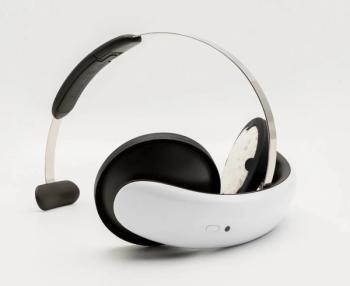
Pulmonary Rehabilitation: A Key to Quality of Life
Q:Which patients with chronic respiratory disorders are good candidatesfor pulmonary rehabilitation? When is it a better option than surgery?
Q:Which patients with chronic respiratory disorders are good candidatesfor pulmonary rehabilitation? When is it a better option than surgery?A:Pulmonary rehabilitation was first formally defined in 1974 as "an art of medical practice wherein an individually tailored multidisciplinary program is formulated which, through accurate diagnosis, therapy, emotional support, and education, stabilizes or reverses both the physio- and the psychopathology of pulmonary diseases and attempts to return the patient to the highest possible functional capacity allowed by his pulmonary handicap and overall life situation."1 More recent definitions have been offered, but in my opinion none have improved on this early statement.Pulmonary rehabilitation has been shown in clinical trials to amelioratedyspnea and to improve exercise tolerance and health-related quality of life.2,3 It may also increase survival in patients with chronic obstructive pulmonarydisease (COPD).2Pulmonary rehabilitation is most commonly recommended for patientswith COPD, but it is also appropriate for those with other chronic respiratory disorders, including irreversible asthma, interstitial lung disease, and cystic fibrosis.2 It may even be helpful for those with advanced lung cancer following treatment, including chemotherapy, and for other patients with severe disease, provided realistic goals are set.Daily exercise is the cornerstone of pulmonary rehabilitation. Walking outdoors (or indoors, perhaps in a shopping mall, in bad weather) reduces dyspnea and results in increased exercise performance, better appetite, and improved sleep. Walking at a comfortable pace for at least 20 minutes twice a day is almost always associated with global improvement. Observational studies suggest that depression and anxiety may improve with exercise rehabilitation, especially inpatients who have significant psychological distress.2As in the management of other chronic diseases, patient and family education is an essential component of pulmonary rehabilitation. Numerous short monographs address these considerations.4,5Pulmonary rehabilitation complements medications and oxygen; it does not replace them. Many patients with COPD can benefit from bronchodilators, and select patients with advanced disease improve with inhaled corticosteroids. Patients with other chronic conditions associated with respiratory insufficiency-- such as interstitial lung diseases and cystic fibrosis--may also benefit from treatment with bronchodilators, corticosteroids, and other medications.Ambulatory oxygen is now the standard of care for mobile patients who can participate in pulmonary rehabilitation.6 Newer ambulatory oxygen systems weigh only 4 to 5 lb and are easy to carry. Compared with oxygen delivered from stationery systems, the use of ambulatory oxygen results in longer survival time and fewer hospital admissions and shorter stays in patients with advanced COPD.7Pulmonary rehabilitation versus surgery. The recently completed National Emphysema Treatment Trial compared lung volume reduction surgery with medical therapy (which included pulmonary rehabilitation and bronchoactive drugs as needed) on many parameters.8 All patients underwent pulmonary rehabilitation and then were randomly assigned to surgery or medical therapy. Survival was no better with surgery than with medical therapy. Thus, medical therapy--including pulmonary rehabilitation--is the standard of care for pa-tients with advanced COPD. However, patients with severe emphysema in the upper lobes and those with severe disease elsewhere in the lungs and poor ability to exercise may benefit from surgery.Appropriate candidates for pulmonary rehabilitation are mobile patients with a good potential for exercise at baseline who want to increase their exercise tolerance and attain a higher level of functioning than is possible with drug therapy alone. Patients should stop smoking before beginning a pulmonary rehabilitationprogram. Smoking cessation may be encouraged at the beginningas well as for the duration of the program.The benefits of pulmonary rehabilitation persist for up to 1 year or more. However, for optimal effect, a maintenance program is recommended.9Home or hospital? Pulmonary rehabilitation programs--regardless ofwhether they are home- or hospital-based--offer significant benefits (Table). Although optimal program parameters have not been defined, most data suggest that the structure and components of the program--rather than the site itself--are the key elements in determining efficacy. In a 12-week trial that compared outcomes of an outpatient program with those of a home-based program, both groups showed a significant decrease in dyspnea and an improvement in exercise capacity and sense of well-being.10 The structure and format of the programs were similar; however, the improvements in exercise performance and dyspnea were sustained longer in the home-based than in the outpatient program.Patient support groups help sustain motivation andmaintain the improvements that have been achieved inpulmonary rehabilitation; they also provide a social outlet.Many regional programs exist for these purposes; theyinclude Cape Cod COPD Support Group (e-mail: clambake@capecod.net) and Emphysema Foundation for OurRight to Survive (EFFORTS; www.emphysema.net).
References:
REFERENCES:
1.
American Thoracic Society. Pulmonary rehabilitation. Am Rev Respir Dis.1981;124:663-666.
2.
ACCP/AACVPR Pulmonary Rehabilitation Panel. Pulmonary rehabilitation.Joint ACCP/AACVPR Evidence-Based Guidelines. Chest. 1997;112:1363-1396.
3.
Cambach W, Wagenaar RC, Koelman TW, et al. The long-term effects of pulmonaryrehabilitation in patients with asthma and chronic obstructive pulmonarydisease: a research synthesis. Arch Phys Med Rehabil. 1999;80:103-111.
4.
Petty TL, Nett LM. Enjoying Life With COPD. 3rd ed. Cedar Grove, NJ: LaennecPress; 1995.
5.
Good JT Jr, Petty TL, eds. Frontline advice for COPD patients. Presented at:Snowdrift Pulmonary Conference; 2002; Denver.
6.
Petty TL, Casaburi R. Recommendations of the Fifth Oxygen Consensus Conference.Writing and Organizing Committees. Respir Care. 2000;45:957-961.
7.
Petty TL, Bliss PL. Ambulatory oxygen therapy, exercise, and survival withadvanced chronic obstructive pulmonary disease (the Nocturnal Oxygen TherapyTrial revisited). Respir Care. 2000;45:204-213.
8.
Fishman A, Martinez F, Naunheim K, et al, for the National Emphysema TreatmentTrial Research Group. A randomized trial comparing lung-volumeâreductionsurgery with medical therapy for severe emphysema. N Engl J Med. 2003;348:2059-2073.
9.
Brooks D, Krip B, Mangovski-Alzamora S, Goldstein RS. The effect of postrehabilitationprogrammes among individuals with chronic obstructive pulmonarydisease. Eur Respir J. 2002;20:20-29.
10.
Strijbos JH, Postma DS, van Altena R, et al. A comparison between an outpatienthospital-based pulmonary rehabilitation program and a home-care pulmonaryrehabilitation program in patients with COPD. A follow-up of 18 months.Chest. 1996;109:366-372.
11.
Rochester CL. Which pulmonary rehabilitation program is best for your patient?J Respir Dis. 2000;21:539-546.
FOR MORE INFORMATION:
- Criner GJ, Cordova FC, Furukawa S, et al. Prospective randomized trial comparingbilateral lung volume reduction surgery to pulmonary rehabilitation insevere chronic obstructive pulmonary disease. Am J Respir Crit Care Med.1999;160:2018-2027.
- Petty TL. Pulmonary rehabilitation in chronic respiratory insufficiency, 1: pulmonaryrehabilitation in perspective: historical roots, present status, and futureprojections. Thorax. 1993;48:855-862.
Newsletter
Enhance your clinical practice with the Patient Care newsletter, offering the latest evidence-based guidelines, diagnostic insights, and treatment strategies for primary care physicians.





















































































































































































































































































